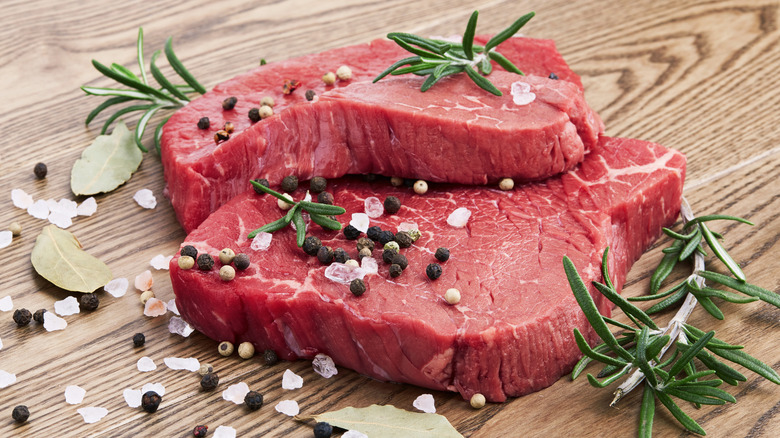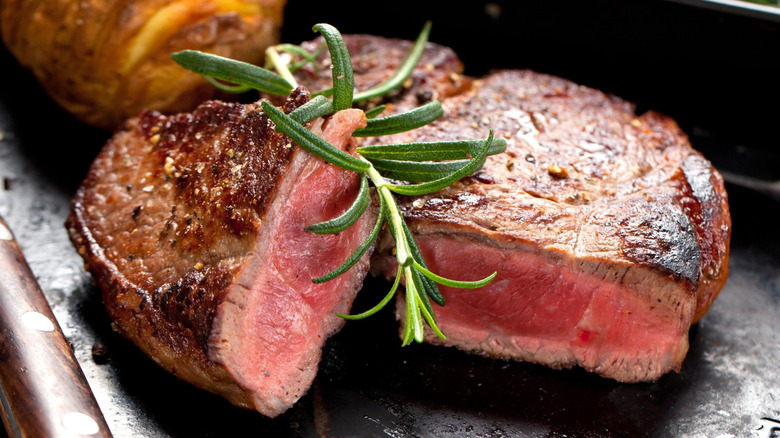A Steakhouse Chef's Salt Tip For Extra Juicy Steaks
We may receive a commission on purchases made from links.
Cooking steak at home can feel intimidating. When done right, it's an instant crowd-pleaser, but when it goes wrong, it can feel like throwing money down the drain. With such high stakes, it's only natural to seek out every tip and trick to bring out a steak's full potential. Surprisingly, one secret to a perfectly cooked steak is most likely sitting in your pantry: salt. To find out why salt is such a game-changer for a well-cooked steak, Food Republic consulted Ed Cotton, chef and co-owner of New York restaurants Jack & Charlie's No. 118 and Leonetta.
For the ideal type of salt to use, Cotton recommended, "Kosher salt (Diamond Crystal brand [aka] Red Box) for its large flake structure and easy distribution." He noted that Diamond Crystal has "clean flavors and [is] more preferred over Morton's, which I feel is saltier in flavor." Known for its clean taste, pinchability, and easy distribution, kosher salt is often considered the premium salt seasoning for steak. But not all kosher salt is equal. Morton's has a denser grain and delivers a saltier flavor by volume, making precise seasoning control difficult, which can overpower your steak. So for the best results, look for kosher salt with less dense, airier flakes.
With your kosher salt on hand, Cotton recommended dry brining your steaks. Don't let the term intimidate you; it's actually incredibly simple! "Salt your steak at least 40 minutes or even up to 24 hours before cooking, leaving it uncovered on a rack in the refrigerator ... The salt definitely should be visible on the steak, but not caked on it," he explained.
The science behind why dry brining makes such a difference to your steak
Today, it's a technique used in many top-tier steak restaurants, but dry brining has been around for thousands of years. Initially, this technique was used as a method of preservation, but it also offers a variety of culinary benefits, such as enhancing the flavor and tenderness of meats from shatteringly crisp chicken wings to succulent smoked turkey. According to Ed Cotton, "Pre-salting or dry brining makes a difference; the initial salting of the meat draws out moisture from the surface via osmosis, and over time, the salty liquid dissolves and then reabsorbs into the muscle fibers." This cycle of osmosis allows the salt to penetrate deeply into the meat compared to just surface salting, resulting in a more evenly seasoned and flavorful steak. Beyond seasoning, dry brining helps dry out the surface moisture of the steak, which is crucial for achieving that perfect, photo-worthy, caramelized brown crust. Without excess surface moisture, the steak can brown more efficiently, developing rich and complex flavors through the Maillard reaction.
Cotton explained that, after dry brining, "the meat is now slightly denatured." Protein denaturation occurs when the salt penetrates the meat, causing muscle fibres to unwind and break down slightly. This tenderizes the meat while also reducing shrinkage during cooking, alongside "[retaining] more water during the cooking," Cotton told us. The combined effect? A steak delivers on tenderness, flavor, and visual appeal every time.


